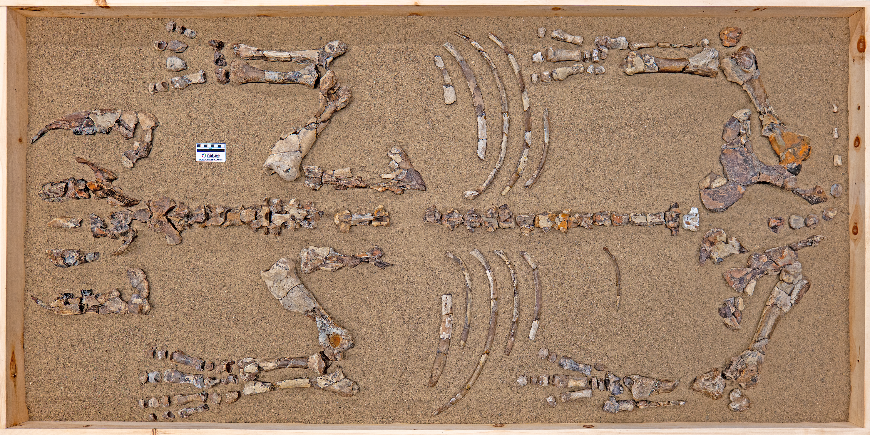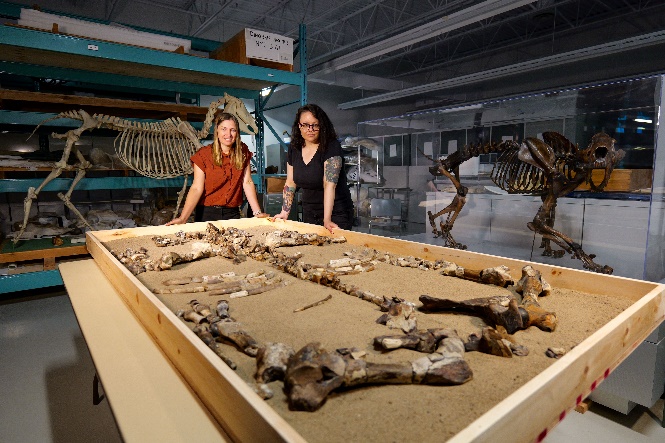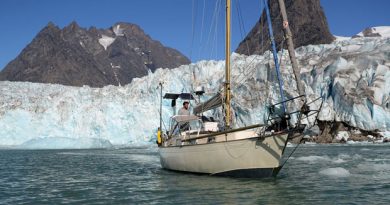A rhino in the Arctic? Nunavut fossil discovery gives new insights into mammal evolution

Rhinos once called the Arctic home and now scientists have identified a new extinct species in Devon Island, Nunavut—evidence that these mammals travelled farther north than any known rhino before them.
“Today there are only five species of rhinos in Africa and Asia, but in the past they were found in Europe and North America,” lead author Danielle Fraser, head of palaeobiology at the Canadian Museum of Nature and lead author of a new paper on the animal, said in a statement.
“The addition of this Arctic species to the rhino family tree now offers new insights into their evolutionary history.”
The paper on the fossil find was published on Tuesday in the journal Nature Ecology and Evolution.
Named Epiaceratherium itjilik, the fossil was found in lake sediments in the Haughton Crater on Devon Island. “Itjilik” means “frosty” or “frost” in Inuktitut.

The fossil is the most northerly rhino recorded and includes almost an entire skeleton.
“What’s remarkable about the Arctic rhino is that the fossil bones are in excellent condition,” Marisa Gilbert, a palaeobiologist, study co-author and Senior Research Assistant at the museum said in a statement.
“They are three dimensionally preserved and have only been partially replaced by minerals. About 75 per cent of the skeleton was discovered, which is incredibly complete for a fossil.”
Shedding light on the mysterious North Atlantic land bridge
According to the research team, the rhino lived about 23 million years ago, during the Early Miocene period, when the Arctic was warmer and forested. The scientists describe the animal as not having a horn but being approximately the size of the current Indian rhinoceros.
Mary Dawson, a paleontologist at the Carnegie Museum of Natural History, originally collected the majority of the bones in 1986. Later fieldwork by Gilbert and other colleagues at the site found additional bones. Dawson died in 2020 at age 89 and but is still credited as the fourth author of the study.
By comparing 57 known rhino species, the researchers found that Epiaceratherium itjilik and its relatives likely crossed from Europe to North America around 23 million years ago, using a North Atlantic land bridge that may have remained passable millions of years longer than scientists once believed.

In a separate study published in July 2025, scientists from the University of Copenhagen managed to pull tiny protein fragments from the Arctic rhino’s tooth enamel — molecules that have lasted for more than 20 million years. The breakthrough extended the record for ancient biological material allowing evolution to be traced in new ways.
“It’s always exciting and informative to describe a new species,” Fraser said Tuesday. “But there is more that comes from the identification of Epiaceratherium itjilik, as our reconstructions of rhino evolution show that the North Atlantic played a much more important role in their evolution than previously thought,.
“More broadly, this study reinforces that the Arctic continues to offer up new knowledge and discoveries that expand on our understanding of mammal diversification over time.”

Comments, tips or story ideas? Contact Eilís at eilis.quinn(at)cbc.ca
Related stories from around the North:
Canada: What Arctic ice can tell us about plagues, climate and conflict in the Middle Ages, CBC News
Norway: Exploring Norse-Inuit links: How walrus ivory shaped medieval Arctic trade routes, Eye on the Arctic
Greenland: New Greenland fossil discovery unveils ancient tundra, clues to sea level rise, Eye on the Arctic



